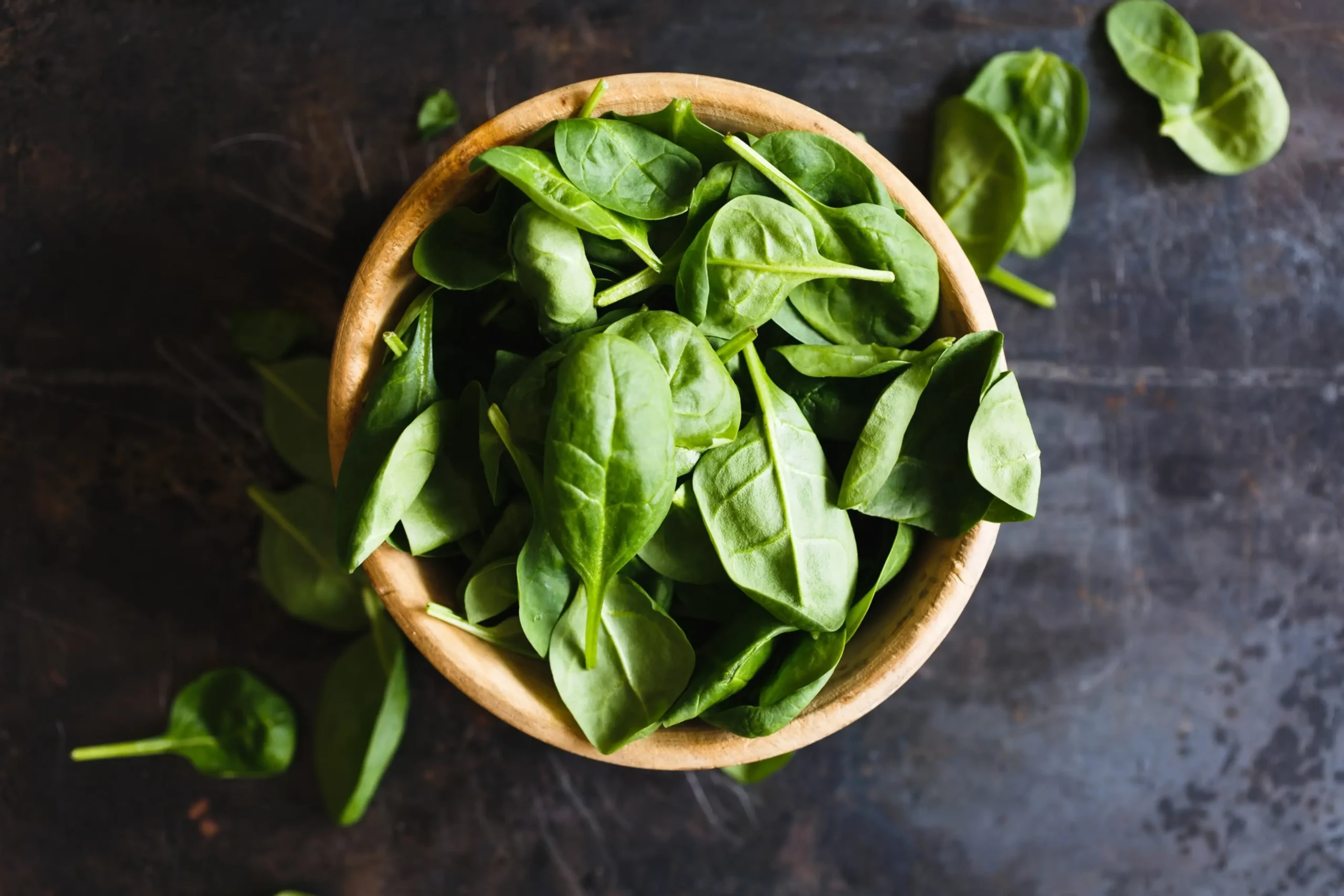Is spinach really the superfood our grandmothers touted? The answer is more complicated than you might think…
You could say spinach was the original “superfood”. It’s long been touted for its nutritional value and recommended as a high source of iron in particular. But is it really the iron in the spinach that gave Popeye his super-human strength? Let’s investigate…
How much iron do you need per day?
To provide some context for comparisons on how high iron content is in particular foods, the NHS has guidelines for how much iron you need per day:
- 8.7mg for men over the age of 19
- 14.8mg for women between the ages of 19 and 49
- 8.7mg for women over the age of 50
Does spinach have iron?
Yes, spinach contains between 2.1mg and 2.7mg of iron per 100g – this however does not mean that spinach is rich in iron, compared to other foods when we consider the benchmark needed to describe it as high in iron.
In terms of labelling? No.
In order to claim that a food is a “source of” iron, a 100g portion must contain at least 15% of the recommended daily intake of iron (14mg)[1]. For a food to be classed as “high in” iron, it needs to have double this number.
Compared to its leafy friends such as kale (1.7mg/100g), the iron content of spinach is high (between 2.1 and 2.7mg/100g)[2], however this falls well short of the 4.2mg/100g required to declare the food “high in iron”.
So, at best spinach is a “source of” iron and not “high in” iron.
In terms of bio-availability? No.
You have probably heard that a high proportion of iron contained in spinach has low bioavailability. This means the majority of iron in spinach is not being absorbed by the small intestine and therefore is not usable by the body. Studies have shown that as little as 2% of iron from spinach is actually absorbed[3]. This is quite low considering the average absorption of iron from meat is around 15-35% [4].
Iron in spinach vs kale
As mentioned, spinach contains 1.7mg of iron per 100g compared to the 1.7mg per 100g of iron found in kale. When we compare these to foods such as fortified cereal at 67.7mg per 100g, beef at 5.5mg per 100g and dried apricots at 6.3mg per 100g, spinach and kale are relatively low in iron content.
So why is this?
Firstly the form of iron found in spinach is non heme, which is generally poorly absorbed in the gut compared to heme iron from animal sources. Heme iron is more resilient to changes in gastric pH and interactions from other dietary components, and consequently is more bioavailable.
Secondly, spinach has very high levels of oxalic acid. Naturally present in vegetables, this acid binds with iron, blocking its absorption in the gut. Spinach has a higher level of oxalic acid compared to most vegetables, with an approximate concentration of 1000mg/100g compared to that in other vegetables, such as kale (20mg/100g), carrot (49mg/100g), beetroot (67mg/100g) and soybean (497mg/100g)[5, 6,7].
Don’t give up on spinach just yet!
There is much debate about whether it is possible to decrease the concentration of oxalic acid in various vegetables and how this is best achieved (mainly through cooking).
A 2014 study found that soaking spinach at 80ºC for various periods of time can significantly reduce the concentration of oxalic acid. While soaking spinach for 80 minutes is pretty unrealistic for the average kitchen, a 20% reduction for 10 minutes seems achievable[6].
Another study found that boiling spinach for 12-15 minutes reduced the total soluble concentration of oxalic acid from 975mg to 477mg/100g[5]. In general, boiling has been reported to reduce oxalates by 30% to 87%[7].
Both cooked and raw spinach have varying and plentiful nutritional benefits besides iron and are very low in calories. For example, when raw, spinach is higher in vitamin C; when cooked, it’s higher in folate[2]. Eating a combination of cooked and raw spinach is the best way to ensure you are getting the best of both and keeps you from getting bored.
Combination eating
Knowing what foods to eat and not eat with spinach can help maximise your iron absorption. Spinach should be eaten in combination with iron facilitators such as Vitamin C. Eating non heme iron rich foods along with heme iron rich foods such as meat can also help increase absorption [8].
To ensure maximum iron absorption, it’s a good idea to avoid iron inhibitors such as phytic acid (which are high in grains and legumes), tannins, polyphenols (found in tea) and calcium when eating high non heme iron meals[8].
For information on how you can track nutrients such as iron in an easy and automated way, find out more on our Nutritics professional product, which is designed for nutritionists and dieticians to track and analyse clients’ food data.
References
[1] Nutritics Research Edition v4.097
[2] European Commission (2015). Nutrition Claims. [ONLINE] Available at: ec.europa.eu [Accessed 28 January 16]
[3] Scrimshaw NS. (1991). Iron deficiency. Sci Am. 265(4):46-52
[4] Insel, PM, Turner RE, and Ross D. (2003). Nutrition. 3rd edition. Jones and Bartlett
[5] Muhammad Shoaib Akhtar , Beenish Israr , Nighat Bhatty & Amanat Ali (2011) Effect of Cooking on Soluble and Insoluble Oxalate Contents in Selected Pakistani Vegetables and Beans, International Journal of Food Properties, 14:1, 241-249
[6] Shimada, Y (2014). The Effect of Soaking on the Soluble Oxalic Acid Content of Spinach. Chugokugakuen J. Vol 13, pp27-31
[7]. Chai,W. Liebman, M. (2005), Effect of different cooking methods on vegetable oxalate content. Journal of Agriculture and Food Chemistry 53, 3027–3030.
[8] Hurrell R, Egli I. (2010) Iron bioavailability and dietary reference values. Am J Clin Nutr;91:1461S-7S
